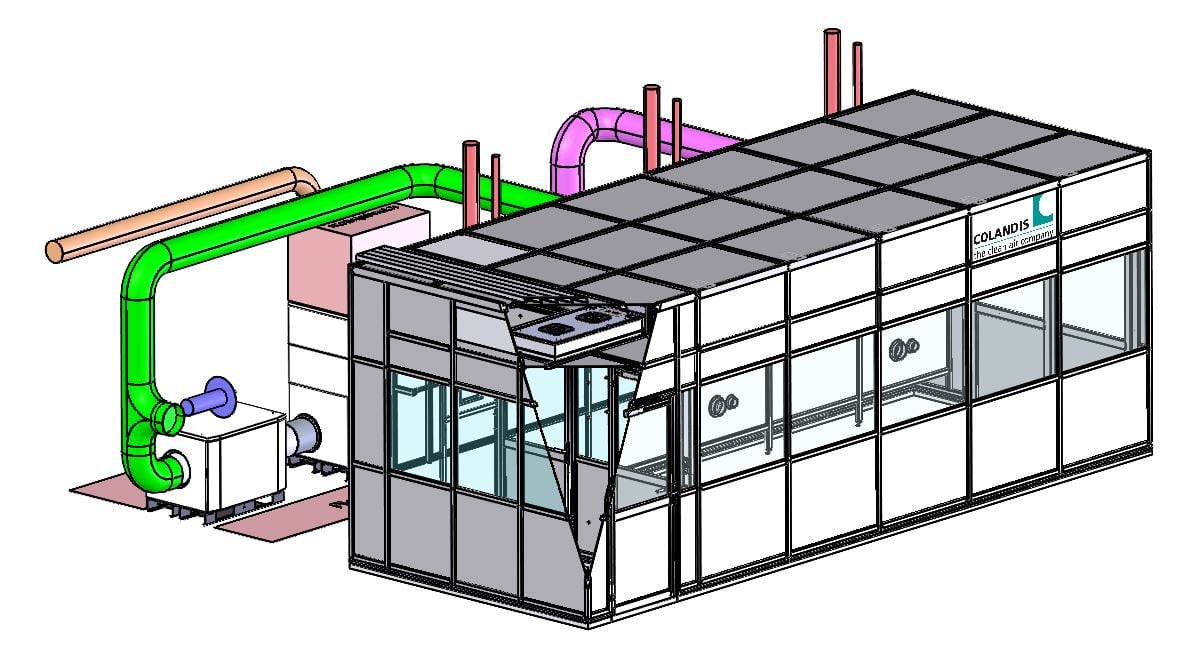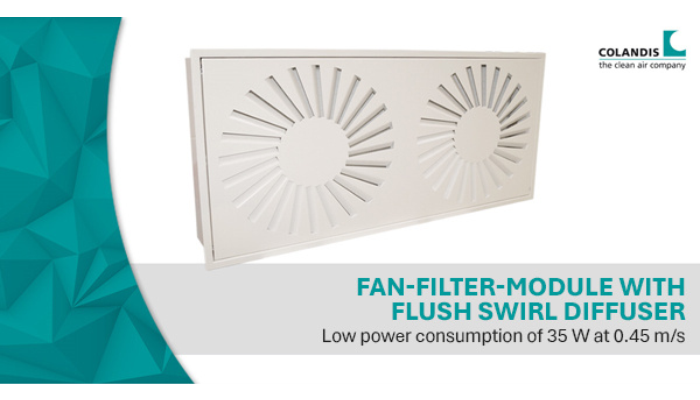Grey room or rather cleanroom?
For some years, the term ‘grey room’ has been used in customer discussions and specialist articles. But how exactly is a ‘grey room’ defined? And how...
In recent decades, the topic of ‘dry rooms for battery cell production’ has increasingly become a key technology for the manufacture of lithium-ion cells. Other products also require low humidity for their manufacture in order to guarantee their quality.
Besides battery cells, they can also be OLEDs, fuel cells or even effervescent tablets, for example. Unfortunately, there is still no binding definition for dry rooms. In English-speaking countries, the term ‘dry cleanroom’ is used, which could or should also be adopted in German terminology. The term dry cleanroom is also appropriate because almost all of these applications are cleanrooms with a defined (extremely) low humidity level. The range in which the humidity must be set is determined by the respective product and the associated manufacturing processes.
The following requirements for a dry cleanroom can be found on the Internet for the production of lithium-ion batteries [1]:
"Pure lithium metal is extremely sensitive to even tiny amounts of moisture in the air, and leads to reduced performance and reliability over the battery life cycle.
With the latest LI chemistries, lithium salts are used to keep the electrolytes stable. In some chemistries, moisture leads to the generation of hydrogen fluoride as an undesired by-product, which leads to gassing and bloating up of Prismatic and Pouch batteries, thereby reducing performance and life expectancy.
Lithium-ion batteries are affected by uncontrolled temperature and humidity during manufacturing stages, in particular electrolyte filling and then battery assembly leading to quality issues around:
Lithium-ion battery production, takes place in controlled environment rooms now commonly referred to as ‘dry cleanrooms’ which are hermetically sealed with ultra-low humidity control.
Battery cleanrooms require low humidity (moisture) levels of cleanliness for LI battery manufacturing processing to ensure product quality in terms of yield, reliability, and safety. Energy management and smart design is critical to manage costs.
When there are people present, comfort conditions must be maintained. The average person releases 1500 to 2000 grains per hour through breathing, and perspiration. This must be addressed by the HVAC system. Therefore, modern Giga Battery dry cleanrooms use high levels of robotics and automation."
The installation of cleanrooms is a not insignificant cost factor when setting up production under cleanroom conditions. Realising the whole thing as a dry room also drives up the costs - not only the investment costs, but also increasingly the running costs for operating the dry rooms.
Battery cells must be produced under dry and clean conditions. Therefore, the combination of clean and dry room technology cannot be considered independently of each other, as both technologies influence each other. The planning of the machine and production processes must be carried out across all components, taking into account the clean and dry room technology.
Battery cell production has currently reached a point where the semiconductor industry was in the mid/end of the 1990s. A decision had to be made to invest in ever higher quality cleanrooms (air purity classes) or to switch to decentralised minienvironment solutions. This new path was then consistently followed, which was reflected in the standards and guidelines of the semiconductor industry [2]:
Mini-environments: 300 mm process/metrology equipment must have minienvironments integrated into the equipment design at a fundamental level, so that first generation equipment includes it as a standard, and wafer and operational cleanliness is universally maintained. The clean wafer environment must be maintained inside pods, at the load ports, and during all wafer handling and processing. (6.3.3)
It is therefore more than logical to use minienvironment technology to realise an extremely dry environment and thus to extend the advantages in terms of cleanliness to the parameters of a dry room.
There are various ways to specify the water concentration in the air. The absolute humidity (aF) describes the content of water or water vapour in the air and is given in g/m³. It is important to know that the water vapour content depends on the respective temperature. At 20 °C the air can absorb 14.68 g of water vapour per 1 m³ of air, at 10 °C it is only 7.62 g/m³. The relative humidity (RH) indicates the percentage of water in the air in relation to the absolute humidity at the respective temperature. At 100 % RH is the point at which the air is saturated with water and the water begins to condense. This point is called the dew point. Due to the dependence of the water content of the air on the temperature, the dew point is given in °C. At this temperature we have a dew point in the air. At this temperature, we have a relative humidity of 100 % at the dew point.
Dehumidifying air is an energy-intensive process. You can imagine that the costs of operating a dry environment depend primarily on the volume of the room. The use of customised minienvironments can significantly reduce the air volumes required and therefore the amount of energy needed to dry the air without having to change the requirements for the process environment. This can also increase process reliability and minimise the impact of personnel on the process. In addition, the automation and interlinking of the individual process stations must be promoted. In dry room environments, just as in cleanroom environments, people are the greatest risk of contamination. Moisture should also be considered a contamination factor here.

In the production of battery cells, as in the semiconductor industry, there will be no getting round the use of minienvironments. In addition to the numerous technical advantages, the energy savings for generating the required purity and drying parameters play a decisive role.
Literature:
[1] ARDMAC; Dry Cleanroom Requirements; https://www.ardmac.com/dry-cleanroom-requirements/, 08.02.2023
[2] I300I Factory Guideline Compliance: Factory Integration Maturity Assessment (FIMA) for 300 mm Production Equipment: Version 4.01; International SEMATECH Technology Transfer # 98023468C-TR,29. Februar 2000

For some years, the term ‘grey room’ has been used in customer discussions and specialist articles. But how exactly is a ‘grey room’ defined? And how...

Although often declared as a secondary process in cleanroom technology, the storage and transport of materials and products are of enormous...

While some suppliers specify their modules with a ‘very low’ power consumption of 300 W at 0.45 m/s or do not even mention the electrical power...